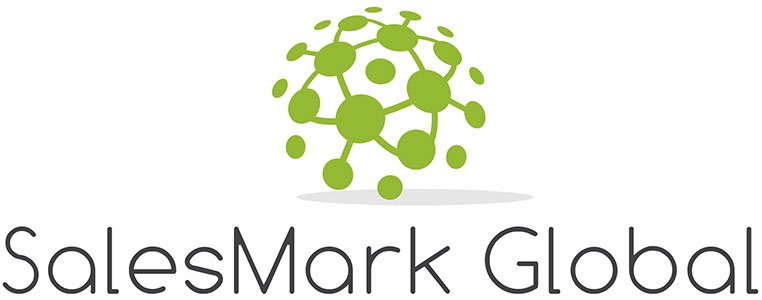Why are Data Management Platforms (DMPs) the Need of the Hour?
Discover why Data Management Platforms (DMPs) are essential for businesses. Learn how they enhance audience targeting, streamline data, and boost marketing efficiency.
In today’s fast-paced world, the business environment has become increasingly data-driven, and many modern marketing companies are harnessing the power of big data to improve their decision-making processes; this aids in achieving operational efficiencies and taking actionable steps to increase revenue and profitability.
Therefore, the most viable investment for this scenario can be a data management platform (DMP). But before implementing a DMP in your business process, you need to understand what the best DMPs are and what examples are available.
Table of Contents
1. Understanding the Importance of Data Management Platforms (DMPs)
2. The Three Key Features for DMPs
2.1. Building and Analyzing Audience
2.2. Advertising Data Integration
2.3. Advanced Security
3. Top Four Data Management Platforms (DMP)
3.1. Google Audience Center
3.2. OnAudience.com
3.3. SalesForce DMP
3.4. Nielsen Data Management Platform
In the End
1. Understanding the Importance of Data Management Platforms (DMPs)
A DMP is an integrated digital tool or platform that allows marketers to collect, manage, and analyze data for business intelligence (BI) purposes. DMPs can aid in gathering first, second, and third-party data from offline and online sources.
As technology evolves, DMPs are powered by AI algorithms and big data analytics, which help you store customers’ information, demographics, and mobile identifiers, such as cookie IDs, that will aid your businesses in finding the correct audience segments.
Some DMPs act similarly to data warehouses, while others are integrated with demand-side platforms (DSPs) that automate media buying across digital networks so marketers can leverage the most cost-effective methods to reach their audiences.
2. The Three Key Features for DMPs
One of the best features of DMP is that it centralizes data so that it can be used across multiple departments. However, it has other functions as well:
2.1. Building and Analyzing Audience
Audience building is considered one of the essential processes in DMP, as it allows you to identify the right groups that aid in targeting and reaching them through an effective campaign and further identify consistent audiences. Once the marketing team launches campaigns related to specific audiences, it must be thoroughly monitored to understand the areas of improvement and the devices that drive the most conversions. The DMP enables you to analyze your audiences pre- and post-campaign further.
2.2. Advertising Data Integration
Maximum DMP has an advertising data integration feature that assembles and uses gathered information from several sources to create a targeted segment. DMPs that accomplish these criteria can create a data-centric marketplace for their users which can help you to expand the company’s audience reach. Therefore a good DMP will not just work alongside but also replace other marketing tools a company uses.
2.3. Advanced Security
As data breaches have become more frequent, digital data-oriented tools, such as DMPs, need to incorporate the best security practices to protect their users and sensitive information. You will find many DMPs that have extensive encryption capabilities to protect data and keep it backed up for recovery automatically.
3. Top Four Data Management Platforms (DMP)
In the B2B marketing landscape, data is everything, as it aids in making more conversions. Therefore, when it comes to managing the data that your B2B organization uses, it’s important to find the best data management platform for your needs.
Here’s a data management platform list that can help you get a handle on what options might be best for your business.
3.1. Google Audience Center
One of the most robust data management platforms designed for advanced audience segmentation and targeting is Google Audience Center DMP, known for seamlessly integrating with Google Ads and Analytics to collect real-time data and work on extensive third-party data partnerships. However, the Google Audience Center DMP is quite costly for small and medium businesses, and it has limited customization compared to standalone DMPs. Coming to the pricing, Google Audience Center DMP provides custom pricing based on usage and integrations; therefore, it is ideal for large businesses seeking precise targeting and scalability within Google’s ecosystem.
3.2. OnAudience.com
OnAudience.com specializes in data monetization, providing tools for audience segmentation and behavioral targeting. The DMP offers extensive third-party data sources, precise audience segmentation, and seamless integration with demand-side platforms and customer relationship management tools, making it ideal for targeted advertising. However, the pricing model can be steep for smaller businesses, and the learning curve may challenge non-technical users. Coming to pricing, OnAudience.com
3.3. SalesForce DMP
Salesforce DMP is a robust solution for businesses aiming to unify and activate customer data across channels. It excels in advanced audience segmentation, AI-driven insights, and integration with Salesforce’s ecosystem, making it ideal for targeted marketing. The Salesforce DMP involves its high cost, complexity for beginners, and reliance on Salesforce infrastructure. Pricing is custom, typically starting in the mid-to-high range.
3.4. Nielsen Data Management Platform
The Nielsen Data Management Platform (DMP) is a robust tool for audience segmentation and data-driven marketing. Its key features include comprehensive audience analytics, cross-platform measurement, and real-time data integration, empowering marketers to create personalized campaigns. However, it has disadvantages such as high pricing and a steep learning curve for non-technical users. Pricing is custom, depending on the organization’s needs. Ideal for enterprises seeking precise audience targeting, the Nielsen DMP stands out for its scalability and comprehensive analytics but may not suit smaller budgets.
In the End
A data management platform can help companies make sense of data and use it meaningfully. Therefore, the above four DMPs can be a critical tool for managing large volumes of data and can be used to improve the efficiency of operations across different departments within an organization. By understanding how DMPs work and what these tools offer, you will be better equipped to make the right decision when choosing the right solution for your needs.



